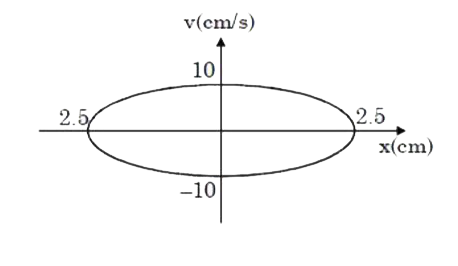The amplitude of a particle performing SHM is 'a'. The displacement at which its velocity will be half the maximum velocity is
√32a
3√2a
a/2
a
The correct Answer is:A
v=ω√a2−x2
aω2=ω√a2−x2
x=√32a
Topper's Solved these Questions
Similar Questions
A particle is performing SHM. At what distance from mean position, the velocity of the particle becomes half of the maximum velocity ?
View SolutionA graph between velocity and displacement of a particle performing SHM is shown. Find the acceleration when the particle is at half of maximum displacement from mean position.
 View Solution
View Solution
Knowledge Check
- Question 1 - Select One
The amplitude of particle performing S.H.M. is
AtensorBvectorCscalarDdepending upon magnitude - Question 2 - Select One
A particle is executing S.H.M. with amplitude 'A' and maximum velocity Vm. The displacement at which its velocity is half of the maximum velocity is
A86.6%AB13.4%AC70.7%AD36.72%A - Question 3 - Select One
The velocity of a particle performing S.H.M. at any position
Aleads in phase by (π/2) than the displacementBlags in phase by (π/2) than the displacementCleads in phase by (π/2) than the accelerationDa' and 'b'
The velocity of a particle performing S.H.M. at mean position is
View SolutionA simple harmonic oscillator has amplitude 2 A and maximum velocity 2 V. Then its displacement at which its velocity is V and the velocity at displacement A are
View SolutionThe velocity of a particle performing S.H.M. at extreme position is
View SolutionThe equation of displacement of a particle performing a S.H.M. is x=0.25 "sin" (200 t) metre. What is the maximum velocity of the particle ?
View SolutionThe velocity of a particle performing linear S.H.M. at mean position is v0. What will be its velocity at the mean position when its amplitude is doubled and time period reduced to l /3 ?
View Solution

